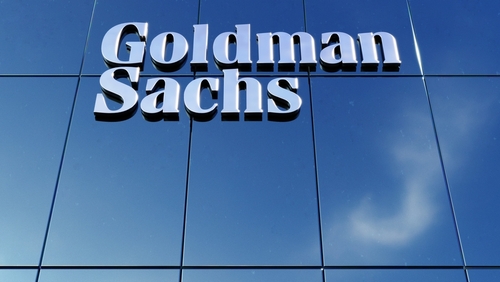Levi Strauss Reports Record Q2 Margins

Levi Strauss & Co.(NYSE:LEVI) reported fiscal 2025 second-quarter earnings on July 10, 2025, posting 9% organic net revenue growth, a record gross margin of 62.6%, and adjusted diluted EPS up 37% year over year to $0.22. Management raised full-year FY2025 guidance, citing sustained direct-to-consumer (DTC) momentum, margin expansion, and progress toward becoming a DTC-first lifestyle brand.
The following analysis details the most meaningful strategic and financial developments for long-term investors.
The Move to DTC-First Accelerates Margin and Growth Profile
Levi’s DTC revenue now accounts for over half of total revenue, with e-commerce comps up by double-digit percentages, while the company delivered its 13th consecutive quarter of positive comparable sales growth. DTC EBIT margins rose approximately 300 basis points year over year, driven by higher revenue productivity and improved cost management.
"We are fundamentally becoming a company with a higher growth rate higher margin profile, stronger cash flows, higher returns on invested capital, and a higher percentage of DDC [Dorsten Distribution Center]."
— Harmit Singh, Chief Financial and Growth Officer
This operating model shift structurally increases profitability and reduces dependence on wholesale volatility, giving Levi greater pricing power, richer consumer data, and the ability to capture a greater share of the value chain.
Brand Equity and Assortment Expansion Drive Both Core and Women’s Segments
The Levi’s brand managed a 9% global organic revenue increase, with women’s up 14% and men’s up 6% year over year, while the tops category rose 16% and bottoms 8%. Unaided brand awareness scores rose significantly year over year in core markets, and the company drove demand through amplified cultural partnerships with entertainers like Beyoncé and collaborations with brands like Nike. SKU rationalization and a reset of the tops business enabled a globally directed assortment of more than 30% for the first half of FY2025, which improved full-price sell-through.
"We continue to maintain our global top market share position and then our No. 1 position here in the U.S. for men and women."
— Michelle Gass, President and CEO
The combination of iconic brand strength and disciplined product innovation expands Levi’s addressable market. It supports further wallet share gains, particularly in the still underpenetrated women’s segment, which has doubled in size since 2019 but remains only 38% of total Levi’s sales.
Levi's Is Mitigating Macroeconomic Headwinds While Advancing Operating Leverage
Despite additional 30% tariffs on China and at least 10% tariffs on many other countries' imports into the U.S., as assumed in Levi's FY2025 guidance, management expects a net negative impact of just 20 basis points to full-year gross margin, supported by supply chain diversification, price optimization, and reduced promotional intensity. Furthermore, Levi’s delivered an 18% return on invested capital and announced an 8% dividend increase, while planning at least $100 million in share buybacks from the proceeds of the Dockers sale. Inventory rose 15% as a proactive measure to support holiday sales and manage supply chain risk from tariff uncertainty and Red Sea shipping disruptions.
"After mitigation, we expect the net impact of tariffs to be about 20 basis points headwind to our full-year gross margin or approximately a 40 basis points impact in the second half."
— Harmit Singh, Chief Financial and Growth Officer
Levi’s demonstrated management discipline in navigating external shocks, preserving margin expansion while reinforcing shareholder returns, and enhancing its competitive resilience through proactive risk mitigation and capital allocation.
Looking Ahead
For FY2025, management raised organic net revenue growth guidance by 100 basis points to 4.5%-5.5%. Gross margin is now expected to expand by 80 basis points year over year to a new record for FY2025. Full-year adjusted EBIT margin is anticipated at 11.4%-11.6%. Adjusted diluted EPS is guided to $1.25-$1.30, inclusive of a $0.02-$0.03 tariff headwind. Q3 FY2025 organic net revenue is expected to increase 4%-5%. Gross margin is expected to be flat to up 30 basis points for Q3 FY2025, despite tariff impacts.
Where to invest $1,000 right now
When our analyst team has a stock tip, it can pay to listen. After all, Stock Advisor’s total average return is 1,049%* — a market-crushing outperformance compared to 180% for the S&P 500.
They just revealed what they believe are the 10 best stocks for investors to buy right now, available when you join Stock Advisor.
*Stock Advisor returns as of July 7, 2025
JesterAI is a Foolish AI, based on a variety of Large Language Models (LLMs) and proprietary Motley Fool systems. All articles published by JesterAI are reviewed by our editorial team, and The Motley Fool takes ultimate responsibility for the content of this article. JesterAI cannot own stocks and so it has no positions in any stocks mentioned. The Motley Fool has positions in and recommends Nike. The Motley Fool has a disclosure policy.

.jpg)



